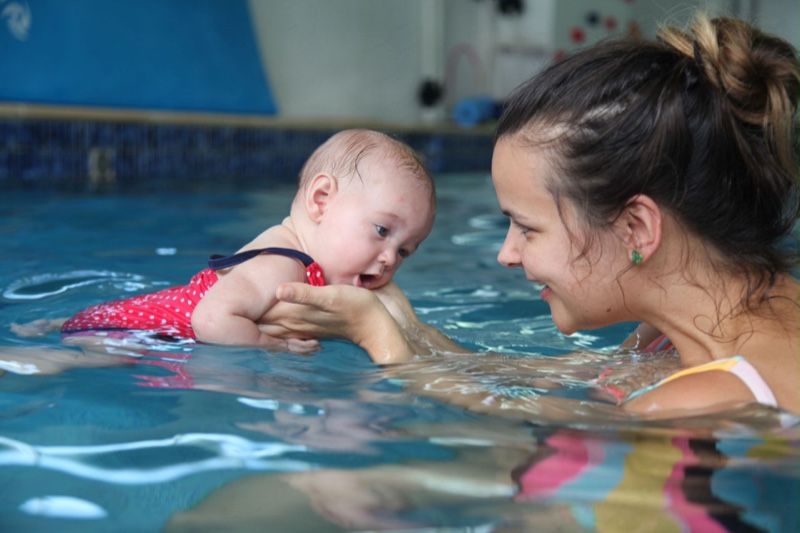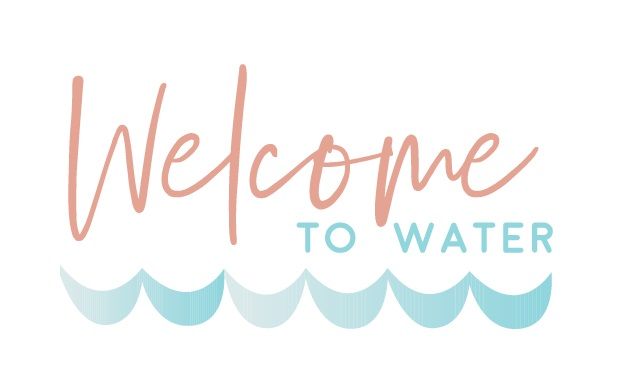The Welcome to Water marketing team met with swim schoolers Australia AND AROUND THE WORLD AT SWIMCON22, while Directors Peter Dalle Cort and Jessie Jones presented the “Debunking the Dunking” workshop.

Controversy ensued, as delegates were asked to question their attitudes, beliefs and values!
PART 2
THE OLD MEANS VS ENDS ARGUMENT
“The use of force may be necessary to protect life” - “Chapter 10 of Nonviolent Communication - Marshall B. Rosenberg, Ph.D.”
So, Dr Rosenberg thinks using force is okay to protect life. Would a Tibetan monk say the same thing?
Rosenberg differentiates between the “protective and punitive” uses of force.
Protective force - Eg. Stopping you from harming yourself: physically pulling a child out of deep water. Even this protective use of force can be taken too far. “It’s for your own good”. How much good is needed to justify the force? And how much force to do how much good?
Punitive force - Eg. Smacking a child who jumps into deep water. This could prevent them from jumping into deep water ever again. But justifiable? Hmmmmm…
It’s okay if... (insert moral justification here).
While Welcome to Water Director Peter Dalle Cort and Jessie Jones were preparing the “Debunking the Dunking” workshop for the SWIMCON22 delegates, their Son, 7 year old Arje, professed that, “using force is okay, as long as it doesn’t kill the baby”. When pointing out the moral inconsistencies, Arje readjusted his position to “well, once the baby starts crying, then that’s too much force.” A little closer to the Welcome to Water position. We will work on him :)
There is a distinction in our law between the protective and punitive uses of force in our swimming lessons. This is demonstrated in a case involving a drown proofing style lesson where a 2 year old is being subjected to “drop training”, a lovely translation of “forced submersion”. This protective use is force is obviously “for his own good”, and in the eye of the law, completely fine. But the moment when the 2 year fought back by thumping his teacher, and the teacher dropped the child into the water as a consequence, then this punitive use of force immediately become illegal.
But just because it’s legal, does it mean it is moral?
Crying in a lesson is normal?

Delegates at the SWIMCON22 were shown a clip (https://youtube.com/clip/Ugkx7cZo-_LOx4h9SEaoieUzfQpcmpOYEweH) containing a swimming lesson participated in a by a 2 year old, his father, a teacher unknown to the child, with mum watching from the sidelines.
Delegates were questioned to point out the uses of force in the video, which they had no problem in doing so:
-Submerging the child as they were resisting.
-Submerging while crying. (Ignoring their verbal cues)
-Physical manipulation on to the back as the child was resisting.
-Offering hands to recover from the swim but, then taking them away.
-Making the child swim to a stranger that they didn’t trust.
Delegates were then asked to consider some ways that they could morally justify these types of force. This is where I could feel the cognitive dissonance increasing in the crowd! How could we justify this style of lesson? We have spent our entire lives speaking out against these practices.
For the Mother of the child in question, the justification was as simple as “the means justified the ends.” (https://youtube.com/clip/UgkxhkLhr39tUtMZNVX4SzAHR1h-lfPMV6OB). The desired result was achieved, therefore the lesson of crying, where the child was fearing for his life, is okay. Luckily her mind was laid to rest by the assertion that this crying was “normal, apparently”.
If we, as an industry, are to reduce the use of force in our lessons, we must do the the hard work of examining our own beliefs, as well as the beliefs of others. Even considering how a forceful lesson can be justified was a difficult task, hampered by our existing belief systems.
Some of the moral justifications offered to the delegates were:
-There was no other option. The family in question live on a sailing boat. They were in port for 5 days. They had a 2 year old that couldn’t swim. There was 1 swimming instructor available. Is this a valid enough justification? For the parents of the child-yes. And if you were in the same situation as those parents, would you use the same justification?
-Stopping an impending catastrophic event, or at least reducing the risk of the event. This child was exposed to a far greater risk than any other child in the world, literally surrounded by water at all times. The risk must be reduced. There is the protective use of force again. Was the child made a little bit safer by doing these lessons, as opposed to never having done the lessons at all? How much safer is a moot point, as is whether the increase in safety is worth the trauma.
“I can get the same result by using less force”. Oh really!?

These above justifications were simply unpalatable in the church of SWIMCON22, as one delegate declared “I can get the same result without using force.” Yes, this may be possible. In fact, I believe that you may be able to get the same result without the same uses of force as well. Here is our belief systems at play again. Don’t forget, the definition of a belief is “acceptance of the truth, reality, or validity of something, particularly in the absence of substantiation.”
It is impossible to know if our strategy towards this child, given the exact same set of circumstances, would have had the same, or better result. All we can do is believe. This is where science needs to step in. We need to quantify the cost/benefit ratio of using force in lessons. That means large scale studies, with sample sizes larger than “our own personal experience”, which at the moment, is all we have. A collective of belief systems, loosely woven into an industry best practice, null and void of serious scientific backing to reduce unnecessary forceful practices.
Conclusion
We all use force/coercion in our lessons. How much force in relation to the perceived benefit that is gained is a debatable topic, based on an individuals attitudes, beliefs and values. We need a serious long term study into the benefits and harm of various learn to swim techniques.
Until then, examine your own uses of force. Why can you justify some uses of force and not others? If you look at your own practices first, instead of focusing on the others, you may find that there are things that you do in your own lessons that don’t really line up with your philosophy of reducing force.
These are the things that Welcome to Water’s staff training modules help teacher’s to recognise and eliminate from their lessons.
Until then, examine your own uses of force. Why can you justify some uses of force and not others? If you look at your own practices first, instead of focusing on the others, you may find that there are things that you do in your own lessons that don’t really line up with your philosophy of reducing force.
These are the things that Welcome to Water’s staff training modules help teacher’s to recognise and eliminate from their lessons.
Bring on the science. For now, our own belief systems will have to do.

© Welcome to Water
Subscribe to our newsletter now!
Get weekly updates on live streams, news and more right in your mailbox.
Thank you!

